

Max Davies
2026 Toyota HiAce review
7 Hours Ago
If you can get over the oversized grille, you'll fast become a fan of what's a return to well-sorted BMW dynamics.
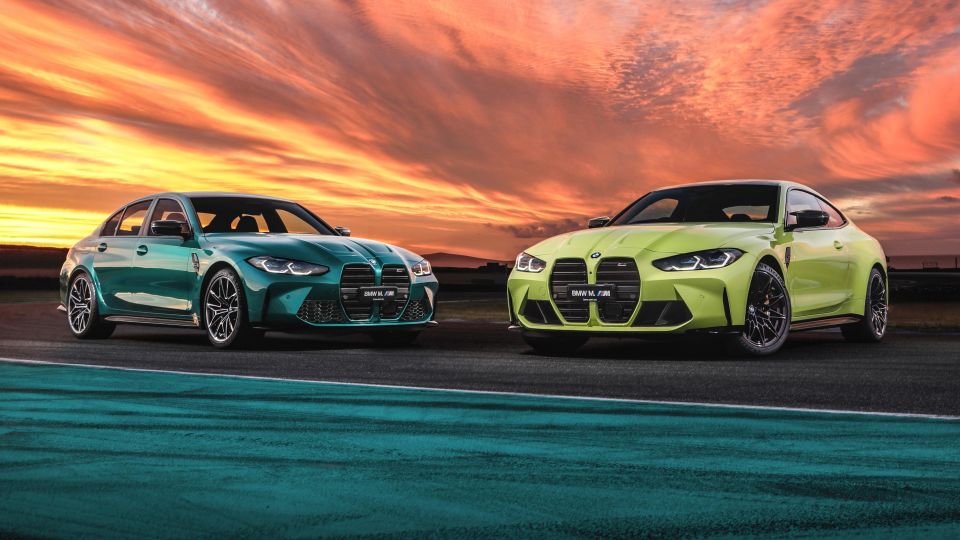
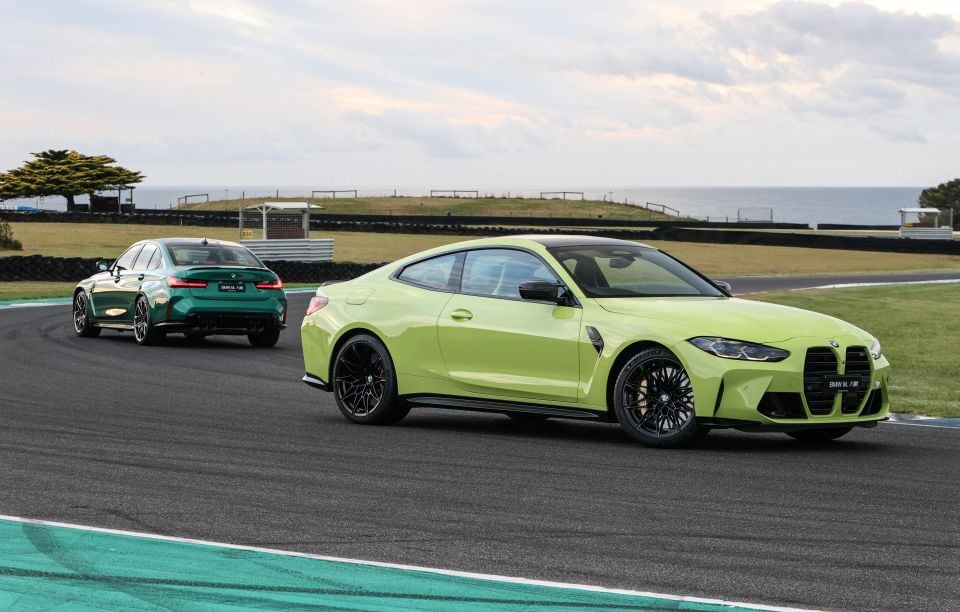

Senior Road Tester

Senior Road Tester


Senior Road Tester

Senior Road Tester
Where expert car reviews meet expert car buying – CarExpert gives you trusted advice, personalised service and real savings on your next new car.
Never before has a new BMW M3 (or M4) sparked as much discussion about design than the latest iteration, and it’s all about that giant nose.
I get it, photos make it look plain wrong, but up close and in the metal it’s not as confronting. Granted, the grille with some of the largest kidneys on a BMW since the 327 is definitely in your face, but after a few hours I’m warming to it.
I guess it’s a more of a shock to those of us who are, or have been, BMW fans at some stage.
I’m talking about fans of cars such as the E30 M3 and Evolution, and the E46 CSL, both of which I’ve been lucky enough to drive.
It’s fair to say the latest M3 and M4 aren’t going to win any design awards, but some solace is to be gained in the knowledge this track-honed pair will stand as the most thoroughly-developed performance variants of the 3/4 Series in history.
There are more powerful inline-six engines boasting better cooling and less weight. There’s an extensive network of interlinked braces for increased torsional stiffness and enhanced agility, as well as bigger, customisable brakes.
And if it’s choice you want, BMW is offering the widest range of M3 and M4 models ever. You want manual/auto options, all-wheel drive, and a wagon? Done.
All-wheel drive will be available in Competition versions later in the year, while the hotly-anticipated M3 Touring will lob in 2022 alongside the M4 Convertible – just in time for summer.

Entry to the 2021 BMW M3 and BMW M4 line-ups are the rear-wheel drive, manual M3 Sedan and M4 Coupe. They’re priced from $144,900 and $149,900 before on-road costs respectively.
Stepping up to the Competition commands a $10,000 premium for both models, making it $154,900 for the M3 Competition and $159,900 for the M4 Competition. All prices are excluding on-road costs.
While all versions come with an extensive standard equipment list, there are a few big-ticket options.
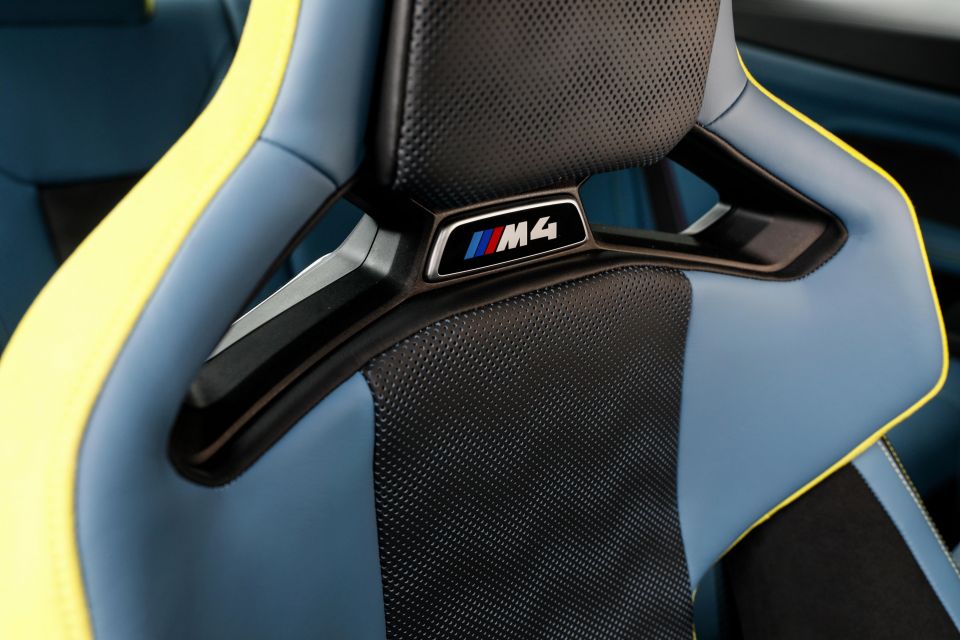
Leading the charge are carbon-ceramic brakes ($16,500), a carbon exterior package ($9500), and carbon bucket seats ($7500) that cut weight by 10kg and include a removable headrests for track driving to allow room for helmets.
A more cost-effective option is available with the Carbon Package ($26,000), which bundles all three carbon options into one.
Dedicated track-day warriors you can swap the standard Michelin Pilot Sport 4S tyres for either Cup 2 or Pirelli P Zero Corsa ($2000) rubber.
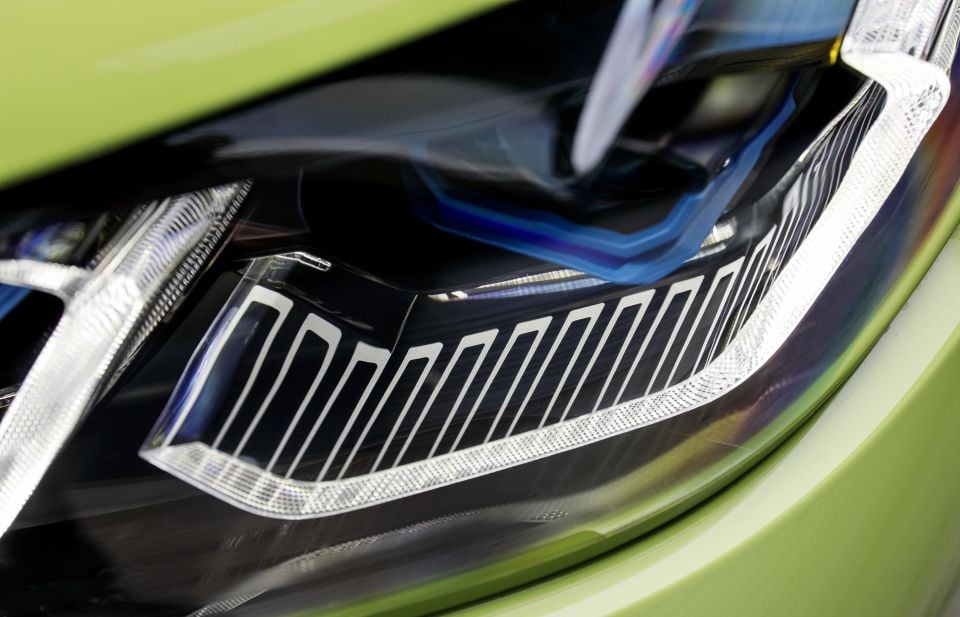
BMW M cars have always included plenty of extra kit over the more vanilla donor versions, but with the 2021 model range you almost get the works, especially with the Competition-spec versions.
Standard equipment on the ‘entry’ models includes staggered 19/20-inch forged alloy wheels, a carbon-fibre roof, adaptive M suspension, an active differential, and BMW laserlights.
Additionally, you get a Harman/Kardon sound system, Apple CarPlay and Android Auto, M sports seats, keyless entry and start, a head-up display, wireless charging, heated front seats, carbon trim, ambient lighting, metallic paint, and Merino leather.
The M3 and M4 Competition add the BMW Digital Key, Driving Assistant Professional with a full range of semi-autonomous driving aids, Carbon paddle shifters, and extended Merino leather upholstery.
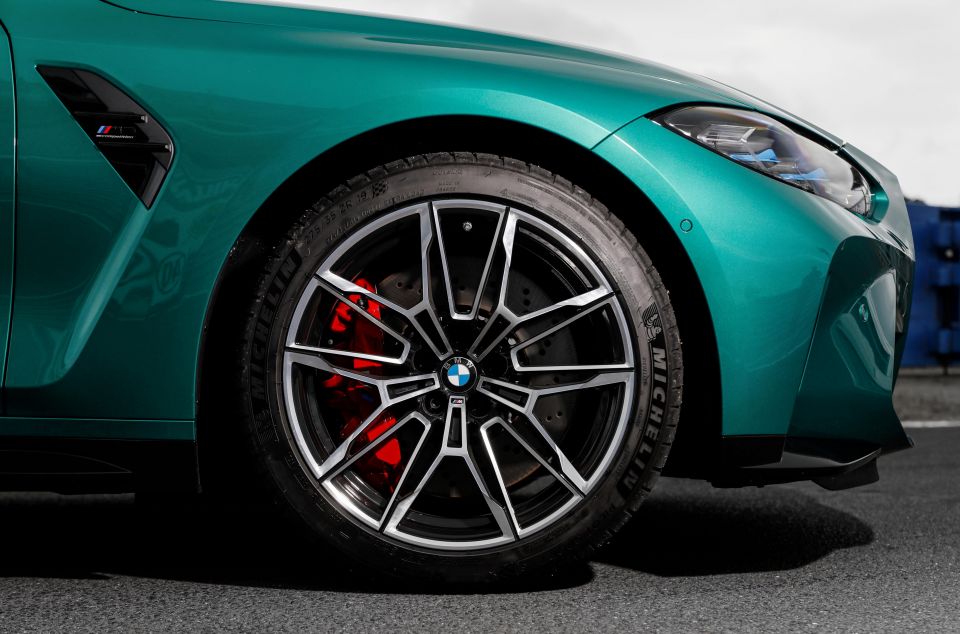
What’s more, there are some fresh colours available, including Sao Paulo Yellow (non-metallic) and my personal favourite, Isle of Man Green.
The only other flat colour is Alpine White, while metallic finishes include Black Sapphire, Portimao Blue, Toronto Red, and Brooklyn Grey as part of the standard inventory.
For those buyers wanting to personalise their car, BMW offers Individual finishes comprising Dravit Grey Metallic, Tanzanite Blue, and Oxford Grey Metallic for $2500.
Higher levels of exclusivity can be had with BMW Individual Frozen Brilliant White at an cost of $7000, Frozen Portimao Blue metallic, Frozen Black metallic, Frozen Dark Grey and Frozen Orange metallic costs $5000.

Both the M3 and M4 haven’t been tested by ANCAP or Euro NCAP, but the standard 3 Series was awarded a five-star safety rating in 2019.
It scored 97 per cent for adult occupant protection, 87 per cent for child occupant protection, 87 per cent for vulnerable road users, and 77 per cent for safety assist.
Manual BMW M3 and M4 manual variants are equipped with BMW Driving Assistant as standard, which brings low-speed autonomous emergency braking, forward collision warning, and lane departure warning.
The range-topping automatic M3 and M4 Competition versions boost safety with Driving Assistant Professional, which adds lane-keeping assist and highway assist which combines adaptive cruise and lane centring functions for semi-autonomous freeway driving.
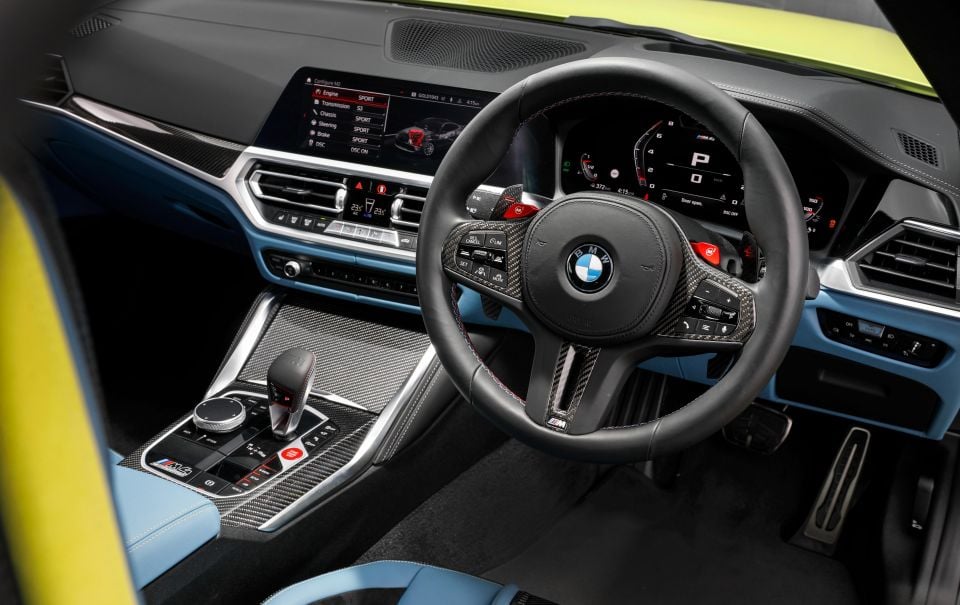
Never before has there been so much variety on offer inside.
The perfect exterior/interior contrast is Isle of Man Green paint with Kyalami Orange/Black leather upholstery. Up close it’s a spectacular combination that works a treat visually.
The M sports seats themselves are massively comfortable and set low, with near perfect levels of bolstering. I’m not sure I’d be keen on the optional M Carbon buckets given the price, reduced cushioning, and the difficulty of lifting yourself out of them.
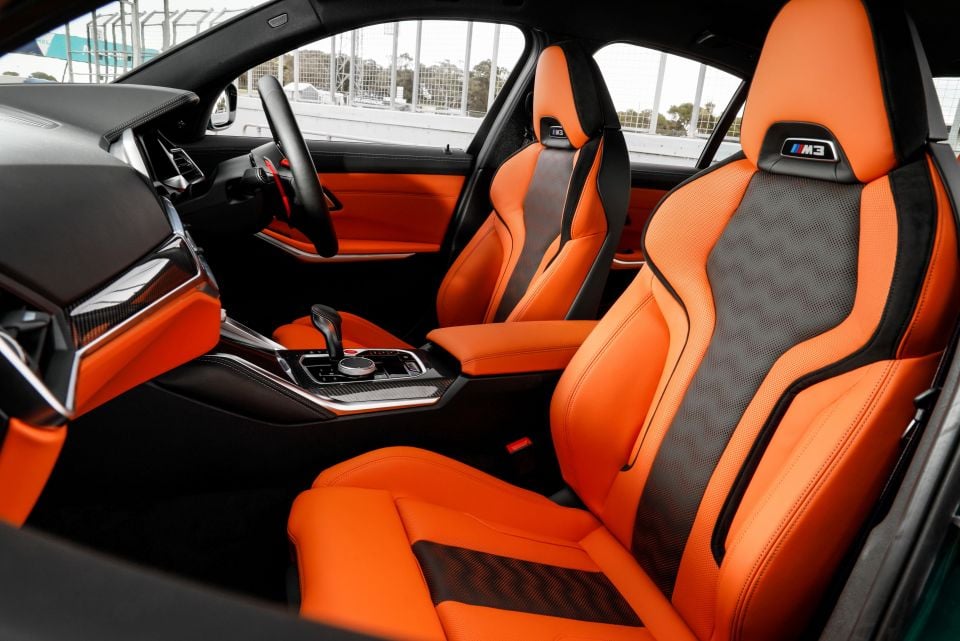
That said, they look the business and the ingenious removable headrests allow extra space for your helmet during track work.
I’m still not sold on the drainpipe-sized thickness of the M steering wheel, but the tactility of the leather is outstanding. There’s also carbon-fibre covering all three spokes, and it’s tasteful.
The best pieces are the extra-long, carbon-fibre paddle shifters attached close to the steering wheel and backed by a thin layer dimpled rubber for better feel when shifting. They work brilliantly on track.
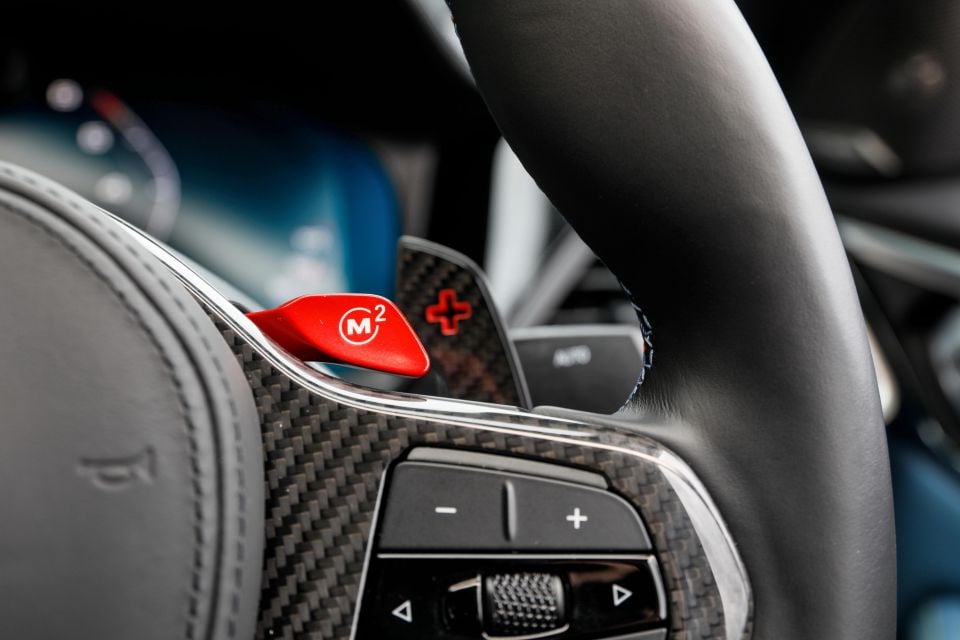

Adorning much of the centre console is beautifully lacquered carbon, which is perfectly contrasted with the leather. There’s plenty of real aluminium spread throughout the cockpit but nothing is overdone, unless of course orange is your least favourite colour.
The speaker grilles in the door cards and dash for the Harman/Kardon audio are real metal as are the door openers. There’s no question a lot of thought has gone into this new M3 and M4 Competition interior, for this is a more premium cabin than offered in any of its predecessors.
The central infotainment display finally appears properly integrated and can be accessed via touch or BMW’s traditional rotary controller. The interface is excellent, as is the response rate.
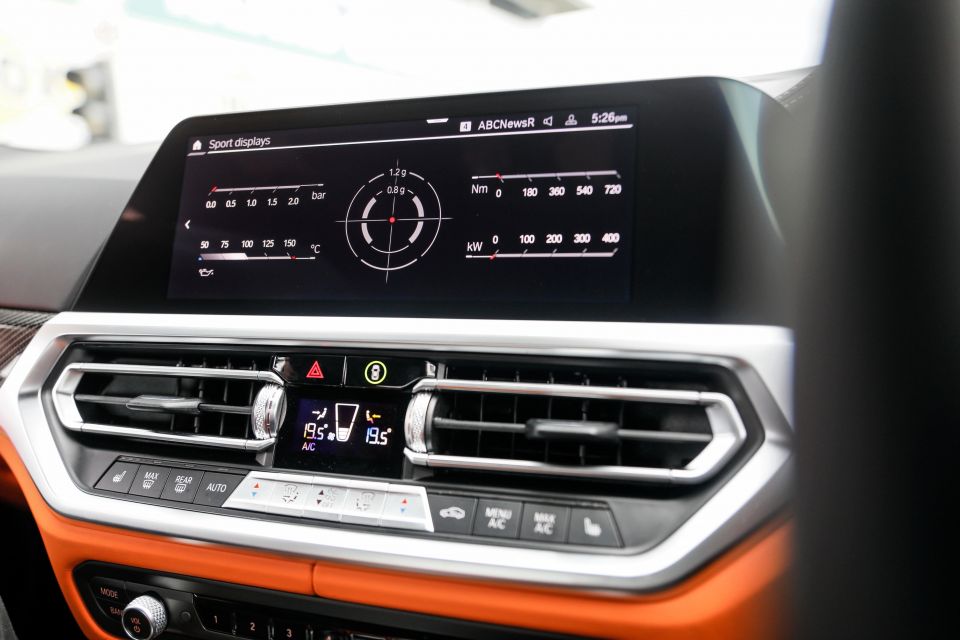
That said, BMW falls short on the clarity, colour, brightness, and configurability with its digital instrument display compared with that used by Mercedes-Benz.
The auto shifter, however, is beautifully crafted with embossed leather and M stitching, as are the seat belts.
Both the M3 Sedan and M4 Coupe measure 4794mm long with the same 2857mm wheelbase, which opens up 480/440 litres of luggage space respectively.
Rear legroom and general usability will be explored in greater detail when we get both variants through the CarExpert garage.
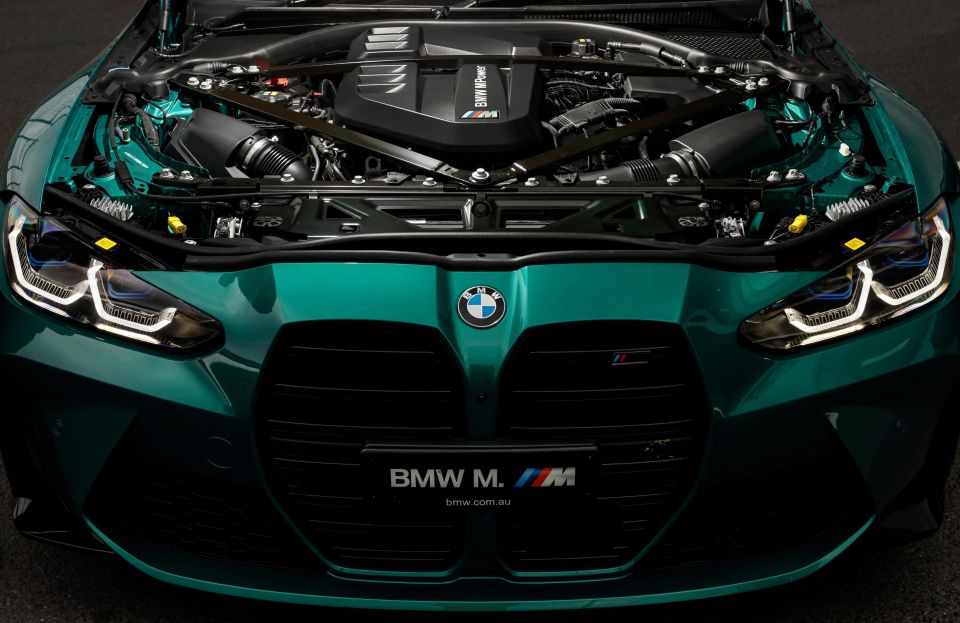
The latest generation BMW M3 and M4 are powered by a new-generation ‘S58’ 3.0-litre twin-turbo inline-six petrol engine, available in two states of tune.
The base M3 and M4 manual make 353kW of power and 550Nm of torque, sent to the rear wheels for a 0-100km/h sprint time of 4.2 seconds.
The M3 Competition and M4 Competition pack an extra 44kW and 100Nm for a total output of 375kW at 6250rpm and 650Nm between 2750 and 5500rpm, dropping the claimed 0-100km/h dash claim to just 3.9 seconds.
Like the standard M3 and M4, Competition-badged versions are rear-wheel drive, but swap the six-speed manual for an eight-speed automatic. All-wheel drive is coming, but won’t be available until later this year.
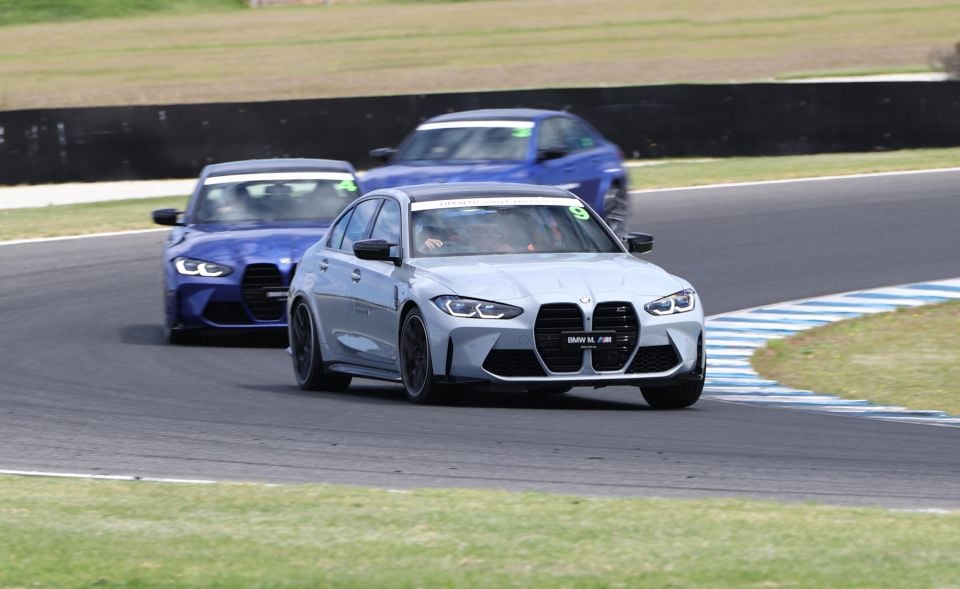
Here’s the thing. Not since the E90 and E92 have I thought the M3 or M4 were properly tied down and equipped for confidence-inspiring track work.
The V8-generation cars were well-balanced BMWs you could press through the bends knowing they would stick. That’s not how I found the previous-generation, which could be sketchy and unpredictable.
Phillip Island still scares me. The speeds are high and the corners unforgiving if you get it wrong. So you can understand my hesitation as I climbed into the M3 Competition parked in pit lane, hoping the improvements made to this car had produced something more forgiving and driver friendly.
The first three laps were in slightly dialled-down Sport mode, accessed via the red M1 button on the steering wheel. The pace hadn’t hit warp speed, and the car felt significantly more stable through the fast sweepers out of Siberia – a place that requires a fair degree of commitment from driver and car.
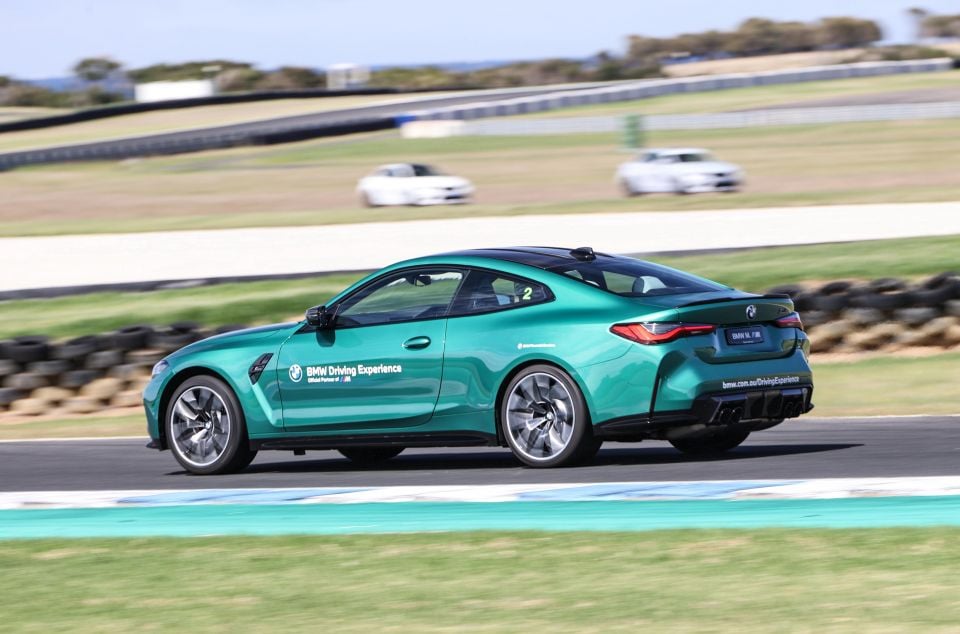
I hadn’t even begun to push but the car felt composed and balanced.
Time to start the second session by hitting the M2 button on the right side of the wheel.
That puts everything into Sport+ with stability control remaining on guard. Now the professionally-driven lead car wasn’t holding back and I was close behind, carrying significantly more speed through the bends.
At the front are strengthening links connecting the strut towers and nose of the car with the bulkhead. As the result, it feels more precise and pointed on turn-in.
Moreover, there are vertical bracings bonding the engine to the front axle, while the centre and rear sections of the chassis incorporate underfloor bracing including a cross bar.
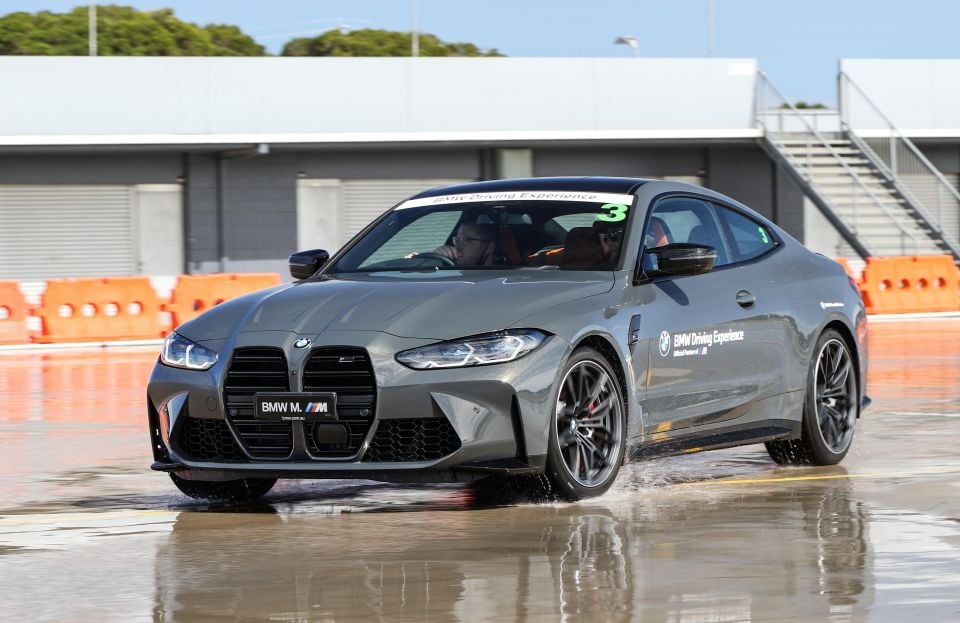
Where expert car reviews meet expert car buying – CarExpert gives you trusted advice, personalised service and real savings on your next new car.
Even under load and in the hairpins, the M3 doesn’t need to be muscled at the apex. Just squeeze the throttle and you’re hurtling towards the next bend with solid composure.
If you’re overzealous Sport+ allows for a small degree of controlled slip, but the car is still easily managed and very satisfying from behind the wheel.
Power delivery is almost lag-free and remains linear through the rev range, making progress through tighter corners a breeze. It’s a cars that asks more of you with each and every lap.
It’s a big step up from its predecessor, even the M4 CS. There’s more grip on turn-in and forgiveness from this chassis, as well as a larger footprint from the front Michelin Pilot Sport 4S tyres (up 10mm to 275mm wide).
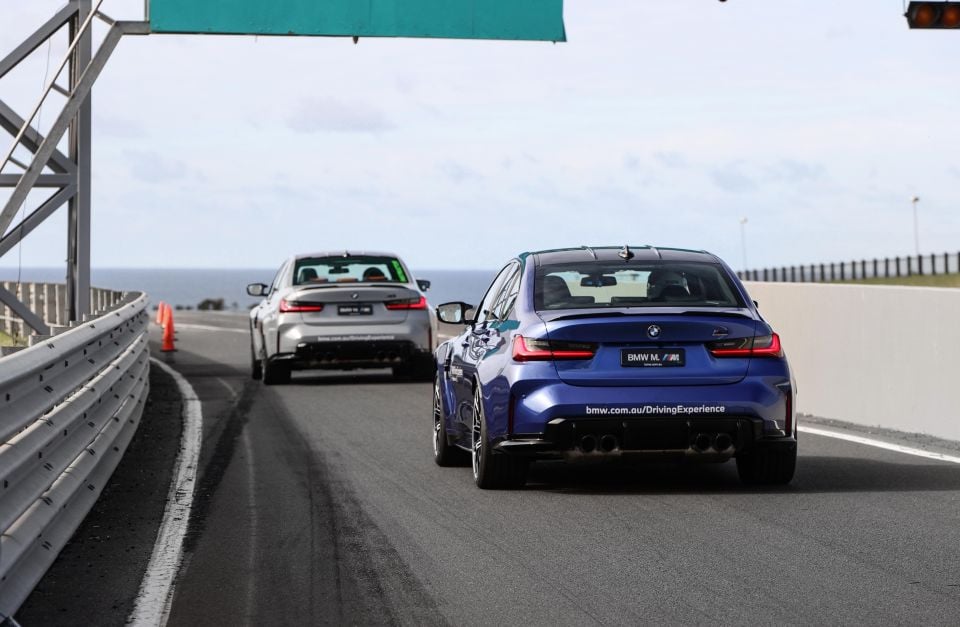
Gearshifts from the new eight-speed automatic may not be as sharp as the previous dual-clutch box, but honestly there isn’t much in it and the shifts are smoother and less unsettling for the car, especially during rapid downshifts.
Perfectly-timed throttle blips are par for the course with this transmission and you won’t pick that part of it from a DCT.
The brakes are larger and more sure-footed with countless laps in the same M3 and M4 and no discernible fade under extreme load, even with limited cooling time between track sessions. It’s impressive.
Clearly, a thorough road test to assess the M3 and M4 Competition’s adaptive suspension is mandatory, but for now the new M cars are noticeably superior to the previous generation.
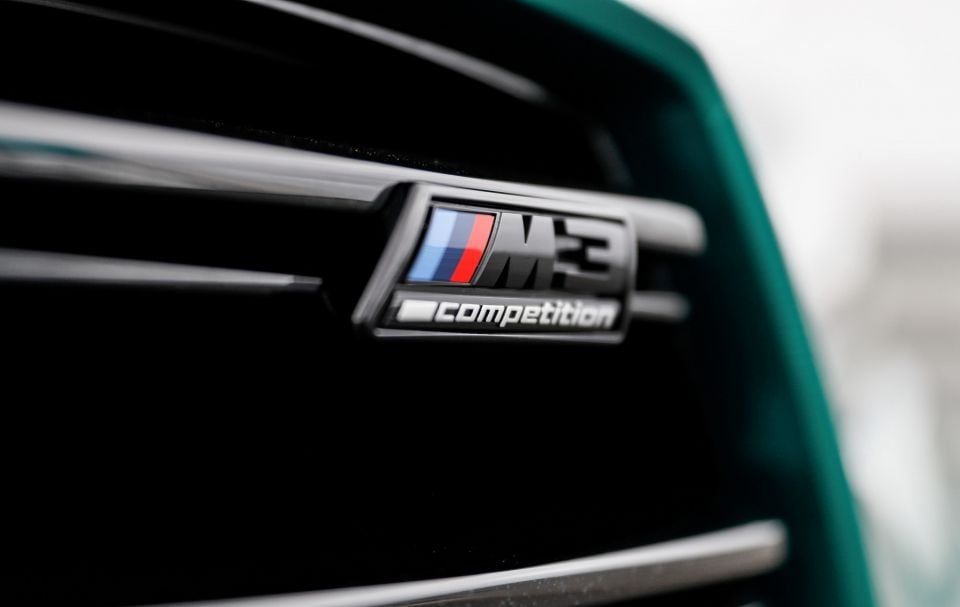
The M3 and M4 are covered by a three-year, unlimited-kilometre warranty.
Servicing is offered through BMW’s Condition Based Servicing which uses sensors to determine maintenance intervals.
Alternatively, you can opt for one of BMW’s Service Inclusive pre-paid maintenance plans, which covers the first five years/80,000 kilometres with ‘Basic’ and ‘Plus’ packages available.
The Basic plan covers all your standard service items for the allotted period and costs $3810 for the M3 and M4, while the Plus package – which includes filters, brake discs and pads, clutches, wiper blades, and brake fluid – is $10,520.
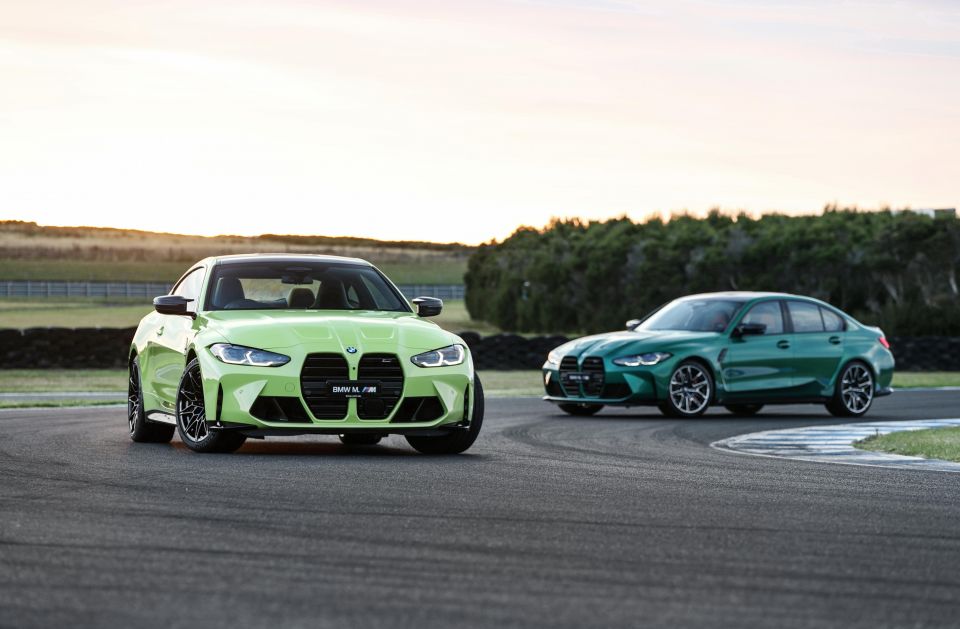
If you can get over the oversized grille (and you will) you’ll fast become a fan of what’s a return to proper, well-sorted BMW driving dynamics.
Add to that a thoroughly contemporary cabin with a stack of features and the latest technology, and the M3 and M4 should once again be the go-to for car enthusiasts with a sufficient bank balance.
That said, you might want to hold fire and wait for the all-wheel drive versions to arrive, or if you need more space put a deposit on the M3 Touring.
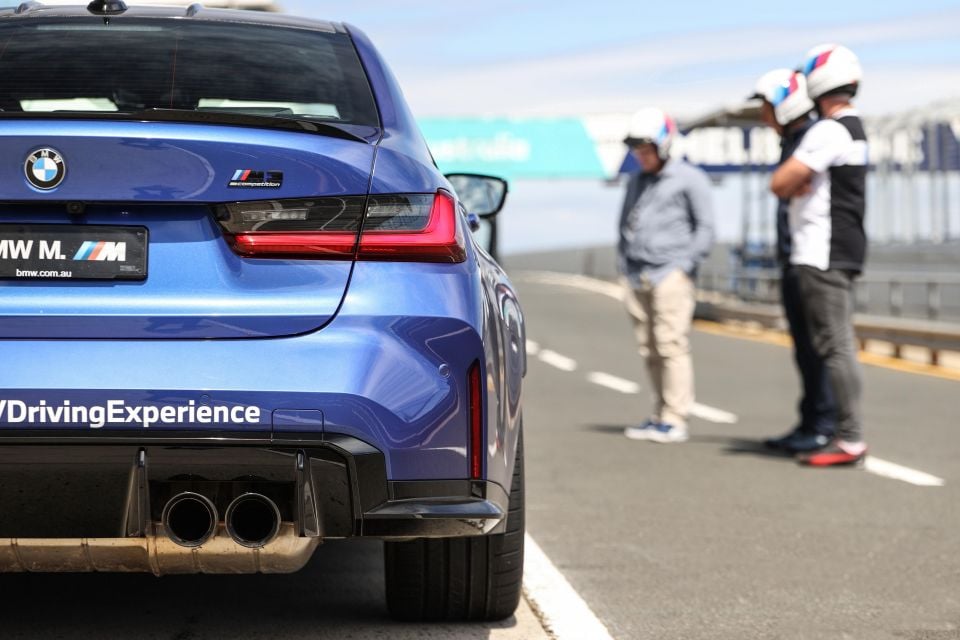
Click the images for the full gallery
MORE: BMW M3 news, reviews, comparisons and videos MORE: BMW M4 news, reviews, comparisons and videos
Where expert car reviews meet expert car buying – CarExpert gives you trusted advice, personalised service and real savings on your next new car.
Anthony Crawford is a CarExpert co-founder and senior presenter with 20+years in automotive journalism and content creation.


Max Davies
7 Hours Ago


William Stopford
23 Hours Ago


Ben Zachariah
24 Hours Ago


Derek Fung
1 Day Ago


Matt Campbell
1 Day Ago


William Stopford
2 Days Ago